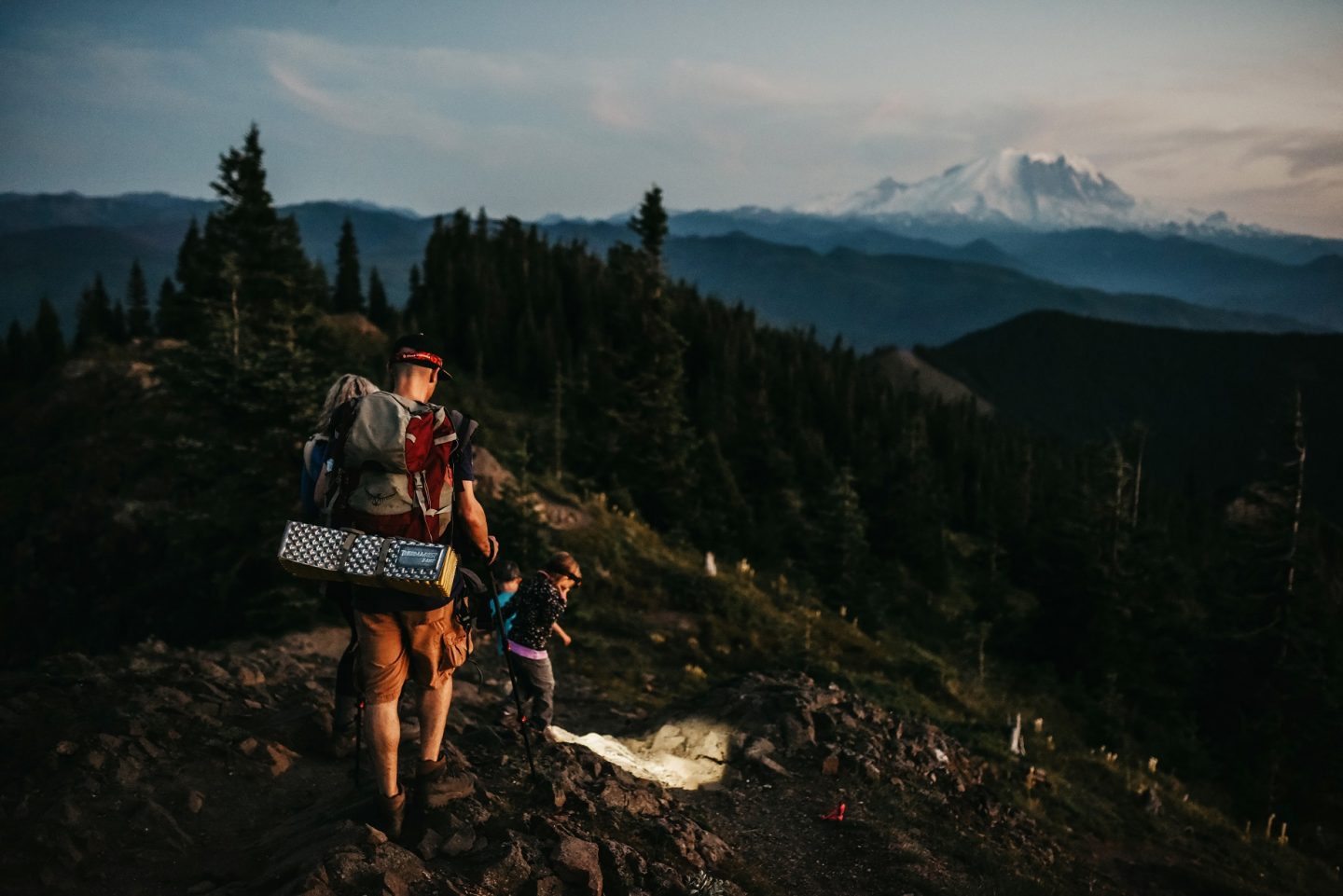Night Hiking 101: How to hike safely in the dark
 Winter can be tough for people like us who love the outdoors. When the sun sets early and temperatures plunge, it can be tempting to cuddle up inside by the fire rather than bundle up for an outdoor adventure. But the shorter days and longer nights of winter do offer something that warmer, longer days don’t: night hikes. Since the the sun starts to dip behind the horizon well before bedtime during the winter, a night hike could be the perfect way to spend the evening. “Every winter we take advantage of the early darkness and we host a big glow hike for our branch!” says San Diego Branch Ambassador Vanessa Wright. “All the families come out with their flashlights, lanterns, head lamps and glow-in-the-dark toys, and we pass out a bunch of glow sticks to share. We make sure to pick a safe and easily accessible trail. It is always a group favorite!”
Winter can be tough for people like us who love the outdoors. When the sun sets early and temperatures plunge, it can be tempting to cuddle up inside by the fire rather than bundle up for an outdoor adventure. But the shorter days and longer nights of winter do offer something that warmer, longer days don’t: night hikes. Since the the sun starts to dip behind the horizon well before bedtime during the winter, a night hike could be the perfect way to spend the evening. “Every winter we take advantage of the early darkness and we host a big glow hike for our branch!” says San Diego Branch Ambassador Vanessa Wright. “All the families come out with their flashlights, lanterns, head lamps and glow-in-the-dark toys, and we pass out a bunch of glow sticks to share. We make sure to pick a safe and easily accessible trail. It is always a group favorite!”
Successful tips for night hiking
- Time your hike just right. Make sure you time your hike so that when you hike out, it's light; and when you hike back, it's dark. This way you'll get to know the trail on your way out. Bonus if you catch the sunset at a lookout.
- Bring extra layers. As the sun goes down, so do temperatures, so make sure you're prepared. Bonus if your layers have reflective elements. We love this reflective beanie that will help your little ones be seen as well as stay warm. This and this quarter zip pullover have reflective elements sewn right in for extra visibility. And in case of rain, check out this reflective rain jacket.
- Pack (a few) lights. This kids' headlamp is a great way for kids to lead the way hands-free. Just make sure the batteries are charged before you hit the trail! We also like this small flashlight that you can keep stocked in your hiking pack, along with this solar flashlight so you don’t have to worry about batteries going kaput halfway into your hike. Glow sticks won't exactly help you find the trail, but they definitely can make the hike more fun.
- Keep an extra close eye out. You never know what you might see. “[When we night hike, we] get to see our favorite trails in a whole new way,” says Vanessa, “and my daughter loves to watch the nighttime critters.”
- Choose a trail you know well. Exploring new trails by daylight can be fun, but to make sure you don't take any wrong turns, stick to trails you are familiar with when hiking by moonlight. Check out the Family Trail Guide if you’re looking for a new family-friendly trail to explore—just make sure you try it out before the sun dips behind the horizon!
Does your family take advantage of earlier sunsets and hike at night? Share your tips for night hiking in the comments below!
Read more:
- 8 Unique ways to take advantage of the long nights of winter
- Staying safe when hiking at night
- Light it up: Headlamp reviews
Photo by Deanna Curry.
This post was sponsored by L.L.Bean.
ABOUT OUTGROWN
OutGrown is a 501(c)(3) nonprofit that works to create a world where everyone can enjoy the physical and mental benefits of spending time outside. We are focused on creating opportunities and removing barriers to access so families with babies and young children can take their first steps outside. We believe all families have the right to connect with nature, benefit from spending time outdoors and be inspired to a lifelong love of nature. Since its grassroots inception in 2013, OutGrown is a growing community of 280,000 families and over 300 volunteer Branch Ambassadors. More information on all of our programs can be found at WeAreOutGrown.org
EDITORS NOTE:
We hope you enjoyed reading this article from OutGrown. We’re working hard to provide our community with content and resources that inform, inspire, and entertain you.
But content is not free. It’s built on the hard work and dedication of writers, editors, and volunteers. We make an investment in developing premium content to make it easier for families with young children to connect with nature and each other. We do not ask this lightly, but if you can, please make a contribution and help us extend our reach.




Comments